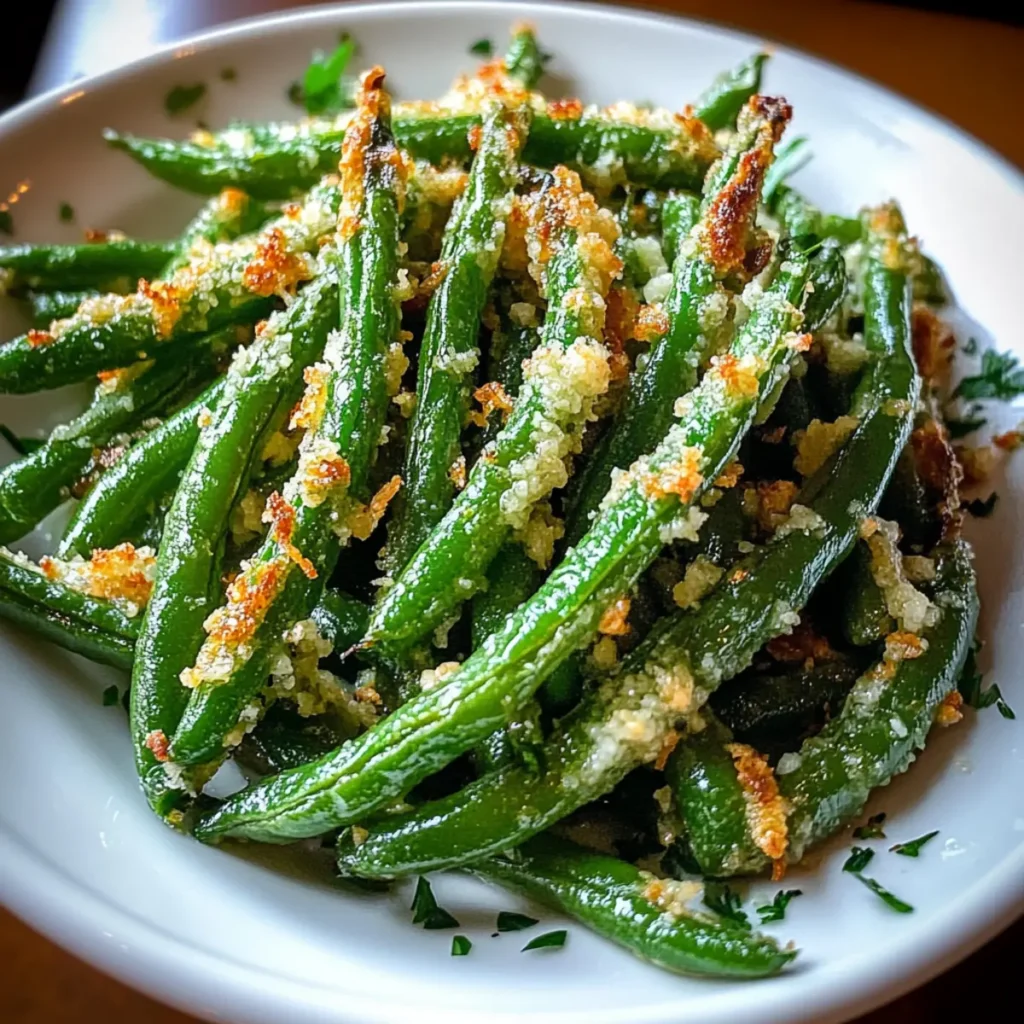Tennessee Onions are more than just a side dish; they are a celebration of Southern culinary tradition. These baked onion casseroles, often made with sweet Vidalia onions, have become a staple in Southern cuisine, known for their rich flavor and versatility.
Types and Selection of Onions for Tennessee Onions
When preparing Tennessee Onions, the type of onion you choose is crucial to the flavor and overall success of the dish. The most commonly recommended type for this recipe is the Vidalia onion, known for its sweet flavor profile, which complements the rich, cheesy nature of the dish. However, there are other options available, each bringing its unique taste and texture to the table.
Best Types of Onions for Tennessee Onions
- Vidalia Onions: These are the gold standard for Tennessee Onions. Their sweetness and mild flavor make them an ideal choice. Vidalia onions are typically available in the summer months.
- Texas Sweet Onions: Another excellent option for those who might not have access to Vidalias. They are similar in sweetness and texture.
- Walla Walla Onions: Grown in Washington, these onions are also known for their sweet flavor, making them a suitable substitute.
Selecting the Perfect Onions
Choosing the right onion is as important as the recipe itself. Here are some tips for selecting the best onions for your Tennessee Onions:
- Look for Freshness: The onions should be firm to the touch with no soft spots. The outer skin should be shiny and crisp.
- Size Matters: Medium to large onions are preferred as they are easier to slice and layer in the dish.
- Avoid Sprouting Onions: If the onion has started to sprout, it’s past its prime and may have a bitter taste.
Seasonal Availability
- Vidalia onions are typically harvested in the late spring and are available through the summer. However, other sweet onions like Texas Sweet or Walla Walla are often available year-round in many regions.
By selecting the right type of onion and ensuring its quality and freshness, you can lay a solid foundation for a delicious Tennessee Onions dish that’s true to its Southern roots.
For more information on Vidalia onions and their unique qualities, visit the Vidalia Onion Committee.
Preparing Tennessee Onions
Preparing Tennessee Onions is a simple process that results in a dish full of rich flavors and comforting textures. This classic Southern recipe transforms the humble onion into a delectable side dish or topping, perfect for a variety of meals. Here’s how to make it:
Ingredients
- Sweet Onions: 2-3 large Vidalia onions or any sweet onion variety.
- Butter: 4 tablespoons, unsalted.
- Cheeses: A mix of 1 cup sharp cheddar, 1 cup mozzarella, and ½ cup Parmesan.
- Seasonings: Garlic salt and pepper to taste.
- Herbs: Fresh oregano or other herbs for garnish.
Instructions
- Preheat Oven: Set your oven to 350°F (175°C) to ensure it’s at the right temperature by the time you’re ready to bake.
- Prepare the Baking Dish: Use non-stick cooking spray or a light coating of butter to prepare a 9×13 baking dish.
- Slice the Onions: Cut the onions into 1/4 to 1/2 inch thick slices. Separate the rings and lay them in the prepared baking dish.
- Season the Onions: Sprinkle the onion rings with garlic salt (about 1 tsp) and pepper (about 1/2 tsp) to taste.
- Add Butter: Cut the butter into small pats and distribute them evenly over the onions.
- Add Cheese: Layer the cheddar, mozzarella, and Parmesan cheeses over the onions.
- Bake: Place the dish in the oven and bake uncovered for 30 minutes, or until the cheese is bubbly and starts to brown. The browning of the cheese adds a delightful flavor and texture.
- Garnish and Serve: Once removed from the oven, allow the dish to cool for a few minutes. Garnish with fresh herbs like oregano, chives, or thyme before serving.
Serving Suggestions for Tennessee Onions
Tennessee Onions, with their delightful blend of sweet, savory, and cheesy flavors, are incredibly versatile and can enhance a wide range of dishes. Whether you’re looking for a standout side dish or a unique topping for your main course, these onions are sure to add a burst of flavor. Here are some serving suggestions to get the most out of this Southern delicacy:
As a Standalone Side Dish
- Classic Pairing: Serve alongside traditional Southern dishes like fried chicken, barbecue ribs, or pulled pork for a comforting meal.
- Holiday Tables: Add a twist to your holiday spread by including Tennessee Onions as a side. They pair wonderfully with turkey, ham, or roast beef.
Topping for Main Courses
- Burgers and Steaks: Elevate your burgers or grilled steaks by topping them with a generous serving of Tennessee Onions. The sweetness of the onions complements the savory meat perfectly.
- Over Grilled or Roasted Meats: Whether it’s chicken, pork chops, or lamb, a spoonful of these onions can add a new dimension of flavor.
Incorporation into Other Dishes
- Hot Dogs and Sausages: A spoonful of Tennessee Onions can turn a simple hot dog or sausage into a gourmet experience.
- Vegetarian Options: For a vegetarian twist, top a grilled portobello mushroom or a veggie burger with these onions.
Creative Uses
- Onion Dip: Chop the baked onions and mix them with sour cream or Greek yogurt to create a delicious dip for chips or vegetables.
- In Sandwiches and Wraps: Add them to sandwiches or wraps for an extra layer of flavor.
Pairing with Other Sides
- With Salads: Serve a lighter, leafy green salad on the side to balance the richness of the onions.
- Potato Dishes: Pair with mashed, roasted, or baked potatoes for a hearty and satisfying meal.
Tennessee Onions are not just a side dish; they are a versatile component that can transform any
meal into something special. Their unique flavor profile makes them a perfect match for a wide array of dishes, from the hearty and savory to the light and healthy. Experiment with these suggestions or come up with your own creative ways to incorporate Tennessee Onions into your meals. The possibilities are endless, and the results are always delicious.
For creative serving ideas and inspiration, check out Southern Living.
Nutritional Information of Tennessee Onions
While Tennessee Onions are a delightful addition to any meal, it’s also important to consider their nutritional aspects. This dish, primarily composed of onions and cheese, offers a mix of nutrients, making it both a flavorful and beneficial choice in moderation.
Key Nutritional Components
- Onions: Onions are low in calories but high in vitamins and minerals. They are particularly rich in vitamin C, which aids in tissue repair and immune function, and vitamin B6, essential for metabolism.
- Cheese: The cheese in the recipe provides protein and calcium, essential for bone health. However, it also adds saturated fat and cholesterol, so it should be consumed in moderation.
- Butter: Used for flavor and richness, butter contributes to the fat content of the dish. Opting for unsalted butter can help manage sodium intake.
Caloric Breakdown
- Calories: The calorie content primarily comes from the cheese and butter. On average, a serving of Tennessee Onions can range between 200-300 calories, depending on the amount of cheese and butter used.
- Carbohydrates: Onions are a source of carbohydrates, but they are primarily low in sugars, making them a healthy choice.
- Fats: The dish contains fats from both cheese and butter, including saturated fats. Choosing lower-fat cheese options can reduce the overall fat content.
- Proteins: Cheese is a good source of protein, which is vital for muscle repair and growth.
Dietary Considerations
- Gluten-Free: This dish is naturally gluten-free, making it suitable for those
with gluten sensitivities or celiac disease.
- Vegetarian-Friendly: Tennessee Onions are suitable for vegetarians, as they contain no meat products. However, vegans would need to modify the recipe due to the dairy content.
- Low Carb: While onions do contain some carbohydrates, the overall carb content is relatively low, making this dish suitable for low-carb diets.
Health Benefits
- Antioxidants: Onions are rich in antioxidants, which help combat inflammation and reduce the risk of chronic diseases.
- Heart Health: The flavonoids in onions can contribute to heart health by reducing blood pressure and improving overall cardiovascular health.
Moderation is Key
While Tennessee Onions offer several nutritional benefits, they should be enjoyed in moderation due to their high fat and calorie content from cheese and butter. Balancing this dish with other nutrient-rich, lower-calorie foods can make it part of a healthy and varied diet.
Fans of our Chicken Rollatini will definitely appreciate the techniques and flavors in our guide to Mastering Smoked Chicken Breast, offering a new twist on a classic ingredient.
Variations of the Tennessee Onions Recipe
The classic Tennessee Onions recipe is beloved for its simplicity and rich flavor, but it also offers room for creativity and adaptation. Whether you’re looking to accommodate dietary restrictions or just want to experiment with new flavors, there are several ways to modify the recipe. Here are some variations to consider:
Cheese Variations
- Different Cheese Types: Experiment with different types of cheese for new flavors. Asiago, Swiss, Gouda, or a smoky Provolone can add an interesting twist.
- Vegan Cheese: For a vegan version, use plant-based cheeses. Many brands offer delicious alternatives that melt well.
Onion Variations
- Different Onion Types: While sweet onions like Vidalia are preferred, you can experiment with red onions for a sharper taste or white onions for a milder flavor.
- Caramelized Onions: For a deeper flavor, try caramelizing the onions before baking.
Additional Ingredients
- Add Proteins: Incorporate slices of cooked bacon, ham, or even shredded chicken for a heartier dish.
- Vegetables: Mix in other vegetables like bell peppers, mushrooms, or spinach for added nutrition and flavor.
Healthier Alternatives
- Low-Fat Cheese: Use low-fat cheese options to reduce the calorie and fat content.
- Butter Alternatives: Substitute butter with olive oil or a plant-based butter alternative for a healthier fat option.
Spicing It Up
- Herbs and Spices: Add herbs like thyme, rosemary, or basil for additional flavor. Spices like paprika or a dash of cayenne pepper can add a little heat.
Serving Style Variations
- Casserole Style: Turn it into a casserole by layering the onions with breadcrumbs or crushed crackers on top for a crunchy texture.
- Dip Form: Chop the baked onions and mix with sour cream or cream cheese to create a delicious onion dip.
Dietary Adaptations
- Gluten-Free: Ensure all added ingredients are gluten-free if catering to a gluten-free diet.
- Low-Carb: For a lower-carb version, reduce the number of onions and increase the cheese and other low-carb ingredients.
These variations of the Tennessee Onions recipe allow you to tailor the dish to your taste preferences and dietary needs, making it a versatile option for any occasion. Whether you stick to the classic recipe or try something new, Tennessee Onions are sure to be a delightful addition to your culinary repertoire.
Planning a special celebration? Our Baby Shower Meatballs Recipes offer creative and delicious options, and for a sweet touch, don’t miss our Enchanting Barbie Cake Ideas for your next big event.
Storing and Reheating Tennessee Onions
Proper storage and reheating techniques are essential to maintain the quality and flavor of Tennessee Onions. Whether you have leftovers or you’ve prepared the dish in advance, here’s how to keep them tasting fresh and delicious.
Storing Tennessee Onions
- Cool Before Storing: Allow the Tennessee Onions to cool to room temperature before storing. This prevents condensation inside the container, which can make the onions soggy.
- Refrigeration: Place the onions in an airtight container. They can be stored in the refrigerator for up to 4 days.
- Freezing: Although freezing is not generally recommended due to texture changes in the onions and cheese upon thawing, if necessary, freeze in a well-sealed container. Use within 1-2 months for best quality.
Reheating Tennessee Onions
- Oven Reheating:
- Preheat your oven to 350°F (175°C).
- Place the onions in an oven-safe dish.
- Cover with aluminum foil to prevent the cheese from burning.
- Heat for about 15-20 minutes or until thoroughly warmed.
- If you want the cheese to be a bit crispy on top, remove the foil for the last few minutes of reheating.
- Microwave Reheating:
- Although the oven is preferred for texture, you can use a microwave for convenience.
- Place a serving of the onions in a microwave-safe dish.
- Cover with a microwave-safe lid or vented plastic wrap.
- Heat on medium power in 30-second intervals, stirring in between, until heated through. Be careful not to overheat, as this can cause the cheese to become rubbery.
Tips for Best Results
- Avoid Overheating: Overheating can cause the onions to become mushy and the cheese to separate. Heat just until warm.
- Add Freshness: If the onions have dried out a bit in the fridge, consider adding a small pat of butter before reheating to add moisture.
- Reviving the Flavor: Sprinkle a little fresh cheese on top before reheating to refresh the flavor.
By following these storage and reheating tips, you can enjoy your Tennessee Onions with the same delightful taste and texture as when they were first made.
FAQs for Tennessee Onions
What Makes an Onion a Vidalia Onion?
A Vidalia onion is distinguished by its specific origin and unique characteristics. It is a variety of sweet onion grown exclusively in a designated region in Georgia, USA. The combination of the climate, soil composition, and cultivation practices in this region imparts Vidalia onions with their distinctive mild and sweet flavor. The name “Vidalia” is legally protected, ensuring that only onions grown in this specific area are marketed under this name. They are known for their low sulfur content and higher water content, contributing to their sweet taste and less pungent aroma.
What is the Least Sweet Onion?
The least sweet onions are typically the “storage onions,” which have a higher sulfur content and a more robust, pungent flavor. Examples include yellow onions, also known as brown onions, and white onions. These onions are more aromatic and have a sharper, more intense flavor compared to sweet onion varieties, making them ideal for cooking where a strong onion flavor is desired.
Is a Spanish Onion the Same as a Sweet Onion?
No, a Spanish onion is not the same as a sweet onion. Spanish onions are a type of yellow onion and are known for their slightly sweet flavor, but they are not as sweet as the onions specifically classified as “sweet onions” like Vidalias. Spanish onions are larger and have a milder flavor than other types of yellow onions, but they still have a level of pungency not found in sweet onion varieties.
What are Pink Onions Used For?
Pink onions are known for their attractive pinkish hue and mild flavor profile, making them versatile in culinary uses. They are less pungent than white or yellow onions but not as sweet as red onions. Common uses for pink onions include:
- Salads: Ideal for raw use in salads due to their mild flavor and crisp texture.
- Pickling: Excellent for pickling because of their mild flavor and appealing color.
- Salsas and Garnishes: Add a pop of color and a mild onion flavor to salsas, garnishes, and fresh relishes.
- Light Cooking: Suitable for light sautéing or grilling, where they add a subtle onion flavor without overpowering the dish.
Conclusion
Tennessee Onions are a delightful and versatile dish that brings the essence of Southern cooking into your home. Whether served as a side or a main dish, they are sure to impress with their unique blend of flavors and textures. Give this recipe a try and experience a taste of Southern hospitality in your own kitchen.
Delve into the nutritional benefits and delicious flavors of our Harvest Bowl Sweetgreen recipe, and for those looking for healthy protein options, explore our Mastering Bison Steak guide.






